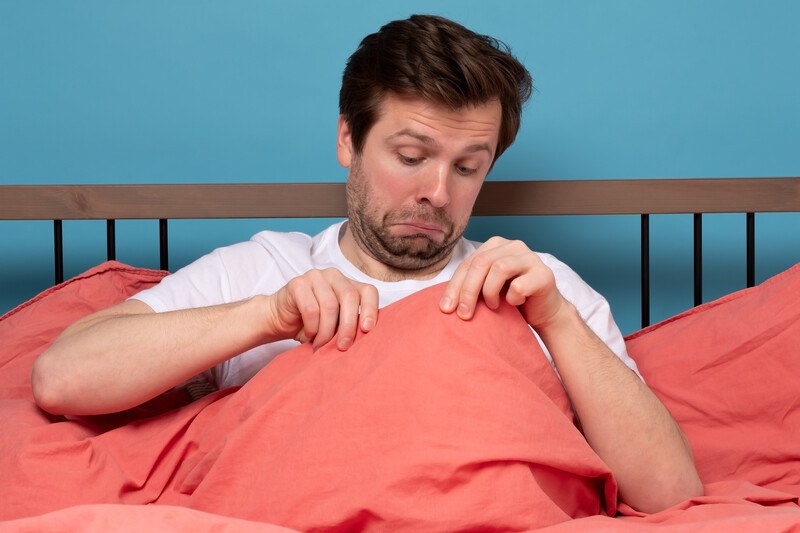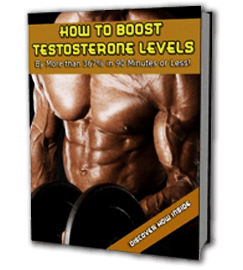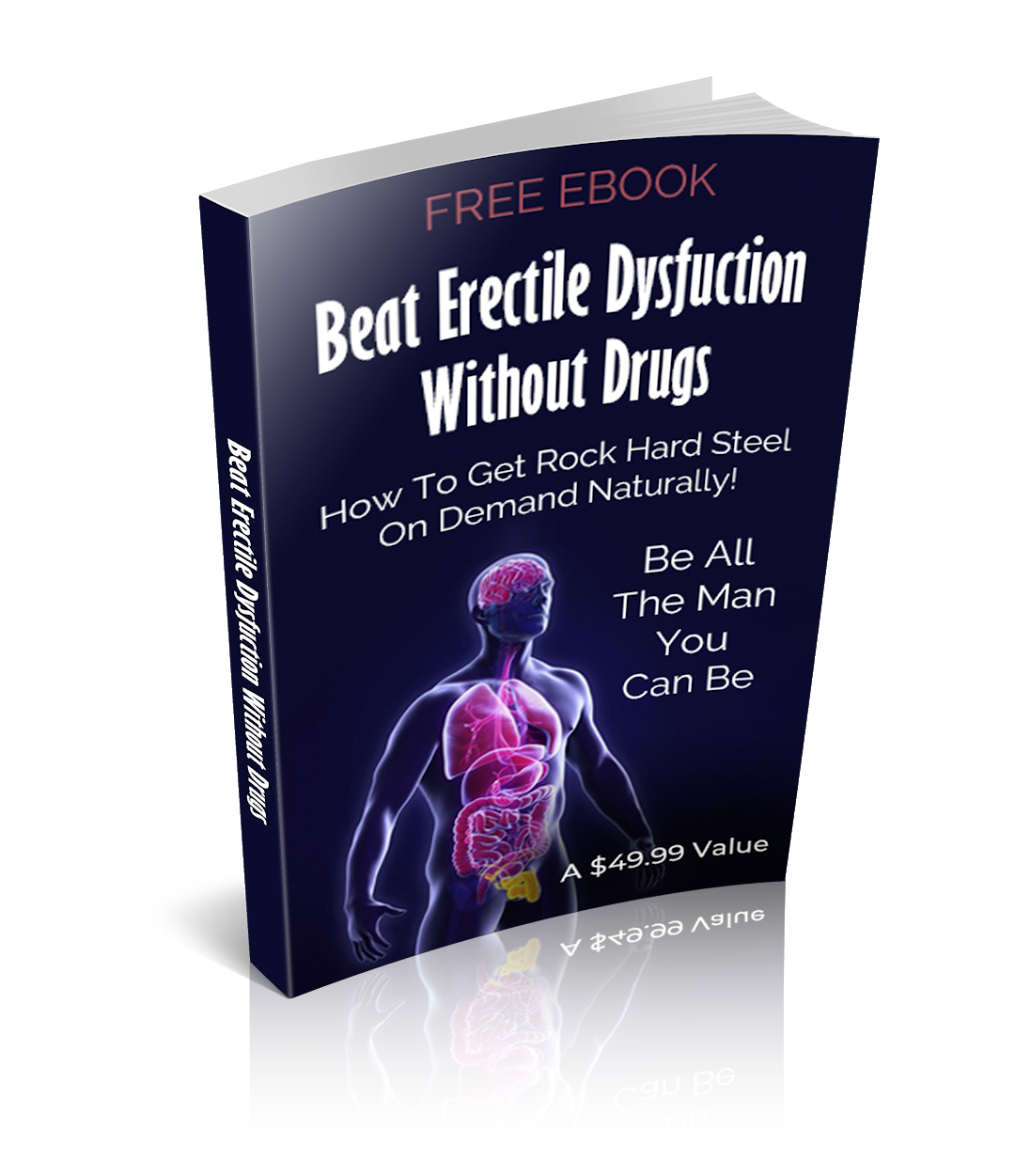(Article medically reviewed by Dr. Zac Hyde M.D)
Is there a link between penile atrophy and low testosterone?
Yes, there most certainly is, especially in young males.
In a study published in the Indian Journal of Urology, a group young men born with micropenise’s were given testosterone.
And all of these individuals experienced penile growth, with some up to an inch and a half in length.
But what about older men?

Other studies have shown that low testosterone causes penile fibrosis in adults which can impact the size and hardness of erections.
Low T individuals also typically accumulate a fat pad directly over the pubic bone, which can make the penis appear significantly smaller.
And finally, men with low testosterone have a tendency to breed much less frequently than high T men, which can lead to disuse atrophy.
Why?

FREE Testosterone Ebook!
+ Hormone Boosting Tips Delivered to your Inbox
Learn 3 Unusual Tricks I Used to Spike My Testosterone Levels By More Than 300%.
Because a penis that sits around limp all the time is going to experience less tissue expansion and less exposure to nutrient rich blood.
Combine all this with the erectile dysfunction that frequently hits low testosterone men…
And you’ll see why this male sex hormone can have a major impact on the appearance, size and function of a man’s penis.
If you have low testosterone and would like to increase production without going on testosterone replacement therapy…
Download a copy of this (no charge) and follow the 3 protocols described inside.
Now here’s David with more…
Penile Atrophy and Low Testosterone – Part 2:
While not a foregone conclusion by any means, many men experience a decline in their testosterone levels as they age.
Typically, our levels will peak around age 19 or 20, then start a slow decline throughout the rest of our lives.
According to medical science, it is the rate of that decline that largely determines what effects “Low T” will have on our lives.
Perhaps the most significant problem that can result from our declining testosterone levels is a condition known as “penile atrophy.”
While it already sounds unpleasant, it is actually far more severe than most men would expect.
In this article, we’ll discuss just what atrophy is and how you can take steps to avoid it.
Testosterone and Your Penis
As the name might imply, our testosterone comes from our testicles. Specifically, it is produced by our Leydig cells.
Even before puberty is triggered, testosterone regulates many important processes in our bodies.
Among its most important jobs are maintaining our sex drive, regulating red blood cell production, and assisting in the development of healthy, mature sperm.
As you might expect, the health of your penis and testicles relies heavily on a steady supply of testosterone.
This isn’t just because it helps maintain our libido, but because imbalances in testosterone can directly lead to erectile dysfunction.
To make matters worse, this is often coupled with conditions like depression, fatigue, and weight gain, which can make also zap our zest leading to reduced sexual activity.
Penis Size, Hormones, and Penile Atrophy
One of the first things we ever learn about our penises is that they have an amazing capacity for growth.
However, this is only physically possible due to the arteries that supply oxygen-rich blood to the chambers in the penile tissues.
During arousal, these chambers, known as corpus cavernosa, become engorged and then expand, forming what we call an erection.
Unfortunately, one of the many side effects of aging is a buildup of plaque and fatty deposits in these arteries.
When this happens, it can drastically reduce blood flow into the corpus cavernosa.
Deprived of blood both when erect and flaccid, the muscle cells and spongy tubes present in our erectile tissues can start to wither.
This wouldn’t be as much of a problem if our testosterone levels remained at the appropriate levels.
After all, part of the hormone’s job is to restore and maintain the health of penile tissues.
But if a loss of blood flow is coupled with a significant decline in testosterone, the results can be quite dire.
This brings us to penile atrophy, a condition characterized by the loss of healthy penile tissue and elastin, which allows our penis to grow.
In many cases, atrophy results from prolonged disuse, a cycle that tends to start with less frequent and weaker erections.
This is where the connection with low testosterone becomes clear.
After first affecting your desire to have sex, the lack of T next weakens your erections until you begin to avoid sexual activity altogether.
Maintaining Healthy Testosterone Levels
If you’re like most men, you don’t intend to succumb to a condition as debilitating as penile atrophy.
Fortunately, you don’t have to.
By taking steps to ensure your testosterone levels remain high as you age, you can help maximize your erections and your sexual health well into your Golden Years.
Below, we’ll outline some of the top ways to keep your T at full supply.
Weight Training and Exercise – Many of the diseases that take a toll on our health as we get older can be prevented with proper exercise.
From sprinting and swimming to biking, keeping your blood pumping can elevate your T levels while also minimizing erection-killing arterial plaque.
However, keeping up a weight training regimen and focusing on building lean muscle remains the best way to keep testosterone levels high in both the short term and long term.
High-intensity interval training, or HIIT, has also been shown to have a big impact on testosterone levels (source).
Keep Up Your Protein Levels – You are what you eat, and that shows up in your testosterone levels.
In this case, eating plenty of protein can help your hormones function at full capacity.
On top of that, keeping a protein-rich diet also aids in fat loss and contributes to overall health.
And while excessvive carb intake can certainly contribute to your waistline, an adequate intake of carbohydrates can help optimize your testosterone levels and boost your weight training results.
Cut the Stress, Add More Sleep – Stress produces a hormone known as Cortisol, which has an inverse relationship with testosterone.
Like a see-saw, a rise in one means a reduction in the other.
Fortunately, cortisol problems can be easily tackled with a proper diet, stress management techniques, and regular exercise.
You’ll also want to make sure you’re getting plenty of sleep.
One study in particular showed that men who slept only four hours a night soon found themselves on the path toward testosterone deficiency (source).
This is especially important if you’re one of many middle-aged men who’ve developed apnea or other sleep-disrupting conditions.
Take Natural Supplements – As always, we strongly recommend you avoid pharmaceuticals if at all possible.
Fortunately, there are plenty of natural supplements out there that can help you boost your testosterone.
Some of the most notable naturals to add to your regimen are tongkat ali, pine pollen and goat weed.
Penile Atrophy and Low Testosterone – Conclusion:
If manhood were an engine, testosterone would be the gasoline. Without it, we simply cannot function as intended.
From reduced muscle density to loss of energy to weak erections, losing testosterone can be a slippery slope that leads inevitably toward impotence.
Once that happens, more serious conditions like penile atrophy can become a reality very fast.
The first step to dealing with this problem is to understand it.
Specifically, you need to know what you can and cannot control. After that, you can start taking steps to maintain and regain your T levels.
Luckily, most of these new habits are easy to adopt.
As an added bonus, the weight loss and increased muscle mass should give you more opportunities to put those testosterone levels to work.

